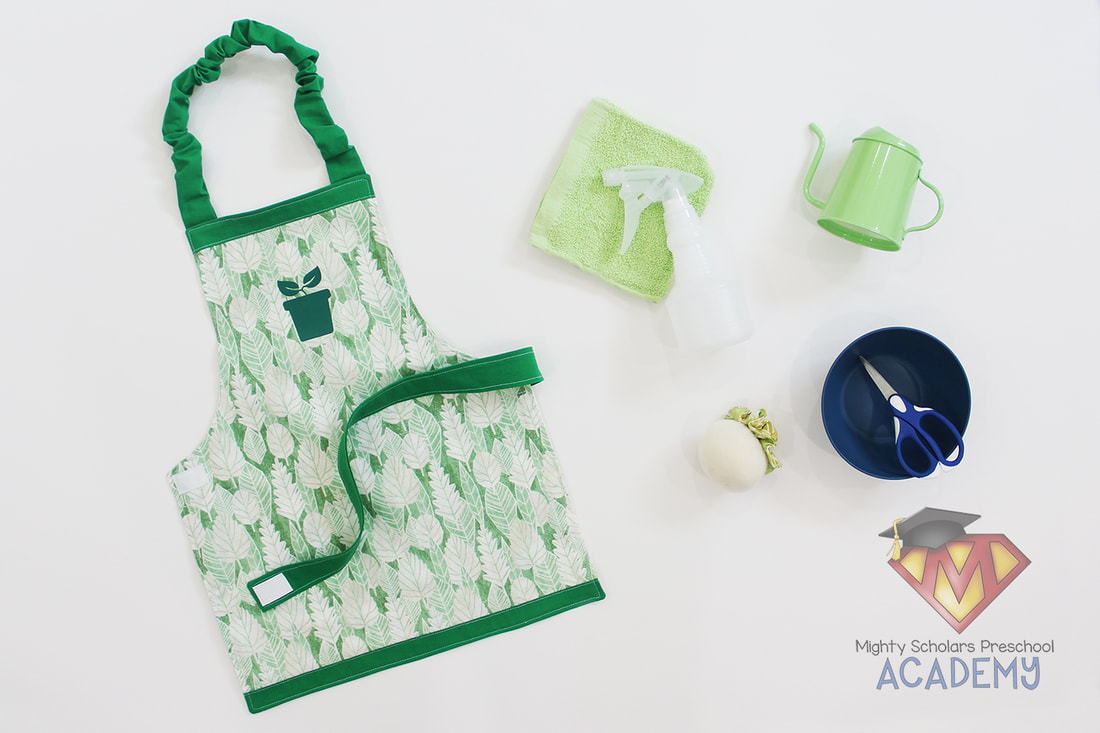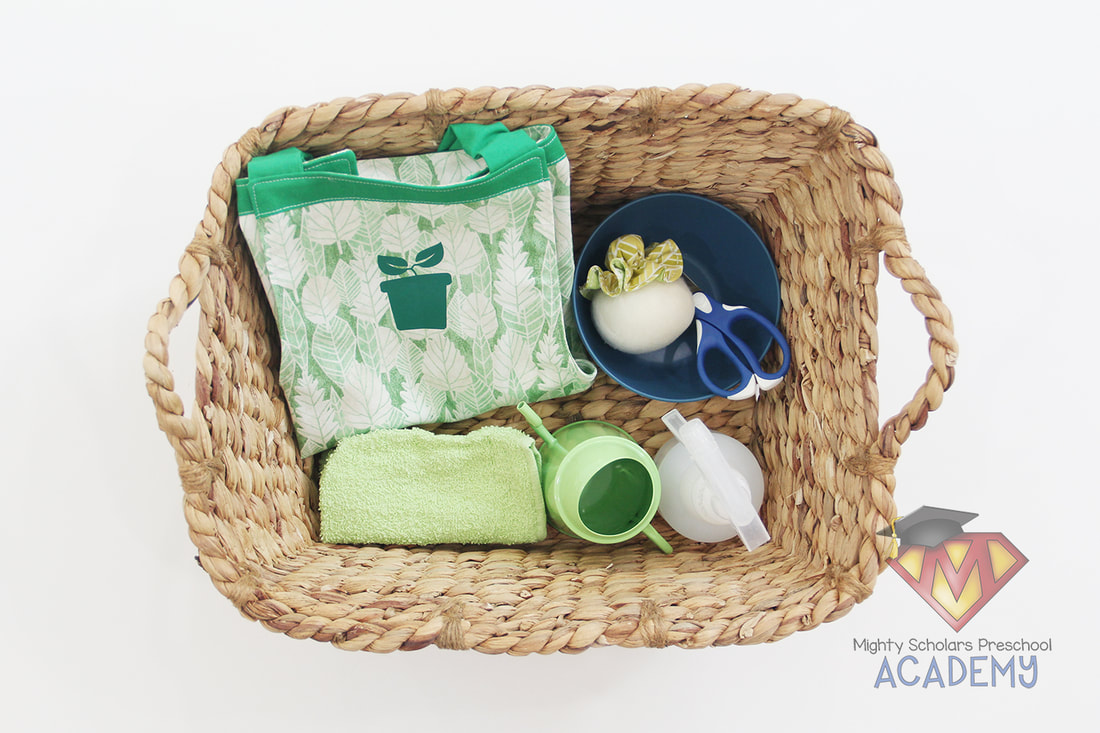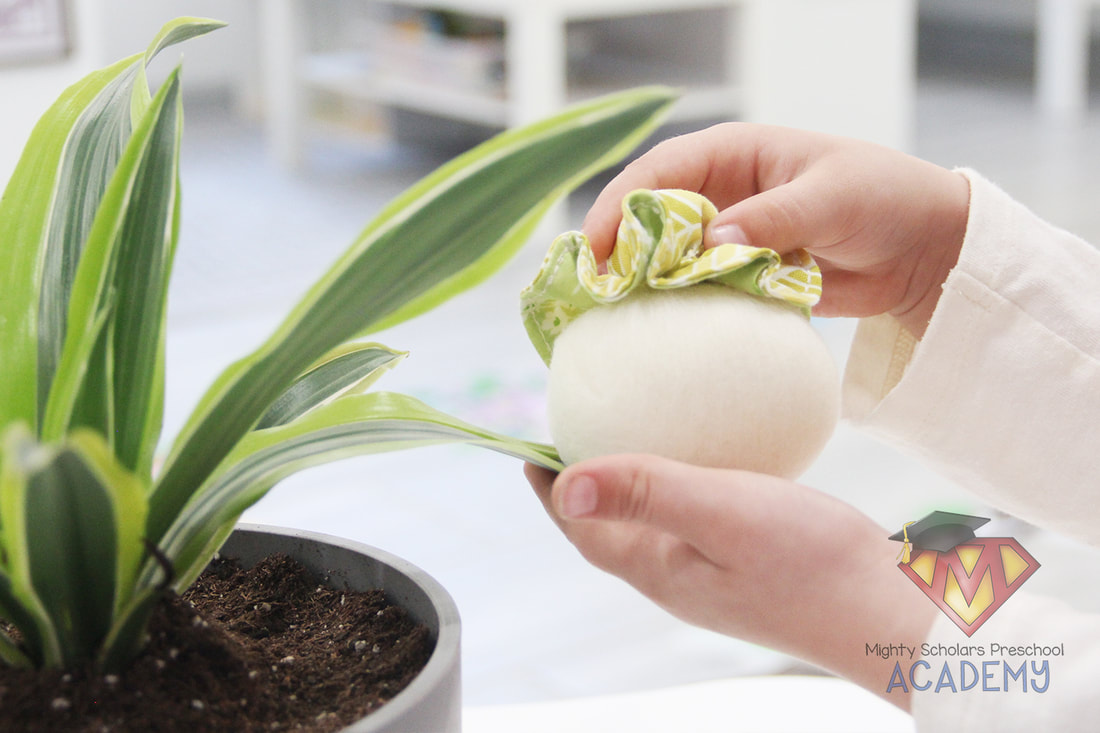|
Plants and the Role They Play in the Classroom
It's so important to have a living organism in the classroom for students to observe and participate in caring for. Caring for living organisms helps children build empathy. Bringing the outdoors inside also has incredible benefits. Some of those benefits can be: improvement of overall air quality (including removing toxins), greater awareness of nature, reduction of stress and fatigue, improved memory and concentration, better engagement with surrounding environments, generating increased positivity and reduction of sickness. Research has shown that students learn better when they are around nature (plants). Students (human beings in general) are drawn towards nature and the feeling it gives them. This feeling is called biophilia.
Plants in the Science Center
Plants can be a valuable part of the classroom science area, year round. We have several plants in our science center, including a glass bubble wall vase that allows a clear view of the entire plant from leaf to root. In addition to the wall glass vase, I applied a vinyl wall decal with the parts of a plant similar to the Golden Pothos, on the wall next to the vase as a visual reminder. Since the various Pothos are easy care house plants that can quickly root and live in water, they make for wonderful observation plants in our classroom. The link for the FREE PNG cut file and color JPG print file, is at the end of this post.
We talk about plants and plant care towards the beginning of the school year, in preparation for students to be given the opportunity to be carers of our classroom plants. We have a full unit on plants that we cover in the Spring. Giving one-on-one plant care instruction to each scholar gives a wonderful introduction to our memorable Spring unit lessons on parts of a plant and basic plant needs that the carers supplied for our classroom plants throughout the year.
Student Care of Classroom Plants
Our older scholars have the opportunity to care for our classroom plants during the length of our school year. Caring for plants can assist in connecting to the environment, learning environmental awareness and the needs of plants to help them not just survive, but to thrive. Students learn the value of other living beings and an awareness of how incredibly important nature is–building empathy. Caring for plants and animals in the classroom helps children understand that everything has needs and not all needs are the same. Having various types of plants in the classroom helps show the varied needs from plant to plant. As we give children the opportunity to be helpers in the classroom and as their empathy grows, we help to build their confidence.
Each scholar receives an individual lesson modeling proper care for the plants in our classroom–during their turn in rotation. The responsibility of plant carer is assigned and rotated from student to student as needed for our plants. The classroom plant carer has certain tools in their carer basket: Montessori independence apron, small Montessori lamb's wool leaf duster, small bowl and child friendly scissors to clip and collect expired leaves, small 8oz. misting spray bottle, small hand towel to wipe up any messes and a mini stainless steel watering can that holds just the right amount of water for the plant in care. The small squeeze action spray bottle is much easier for small hands to use, rather than a finger pump spray bottle, and provides excellent hand strengthening. Once they have been instructed and the plant care has been modeled, they take great pride in their meaningful responsibility for the delicate care of our classroom plants. The carer basket is placed out of students reach when not in use. The basket is brought out and a plant is taken to a table when it's time for a student to care for it. Care of plants is always supervised, with limited to no interference.
Cautions and Tips
Many classrooms have low light conditions. There are several plants that can thrive in a low to medium light environment. Some popular low to medium light, easy care plants are: pothos, snake plant, philodendron, spider plant and the peace lily. Take care in choosing plants for your classroom and where they'll be placed. Some plants are toxic or can cause adverse skin reactions.
Overwatering is the number one cause for plant root rot, stem rot, yellowing of leaves and leaf drop. It's best practice to allow the soil to dry completely between waterings. Keeping the soil too wet can also invite pests such as fungus gnats. Teaching scholars the correct way to check soil, to see if the plant needs watering, can also be a valuable part of their care routine. I teach my scholars to check soil by carefully pushing their index finger into the soil, up to the second knuckle. If the soil is completely dry to that depth, the plant needs watering. Each plant will have its own needs. Making a list of average watering schedules for each plant, or marking the pots with a color to help keep track of how often to water, can help alleviate some of the headaches with the different needs. A checklist can also be kept to help keep track of each plant and when it has been cared for. Older students can learn to mark the checklist and help with making sure plants are checked on a regular basis for needs. As an alternative to a paper list, I recommend the 'Planta' app. After listing each type of plant and its basic information, the app will remind you to check for watering and to fertilize, depending on the particular plant need. I've found this app to be extremely handy since our classroom has more than a dozen plants with varying needs and watering schedules.
Click the image below to be taken to the FREE PNG cut file and color JPG print file:
Please note, as a participant in the Amazon Services LLC Associates Program, I may earn a small commission on qualified recommended links.
The Amazon Services LLC Assocites Program is an affiliate advertising program designed to provide a means for sites to earn advertising fees by advertising and linking to Amazon.com
My Amazon Picks for plants in the classroom are:
Comments are closed.
|
Categories
All
©2012–2024 Mighty Scholars Preschool Academy
|








